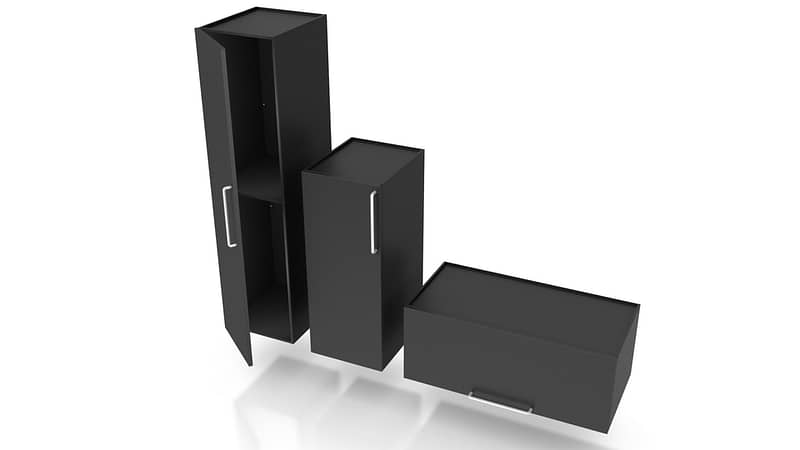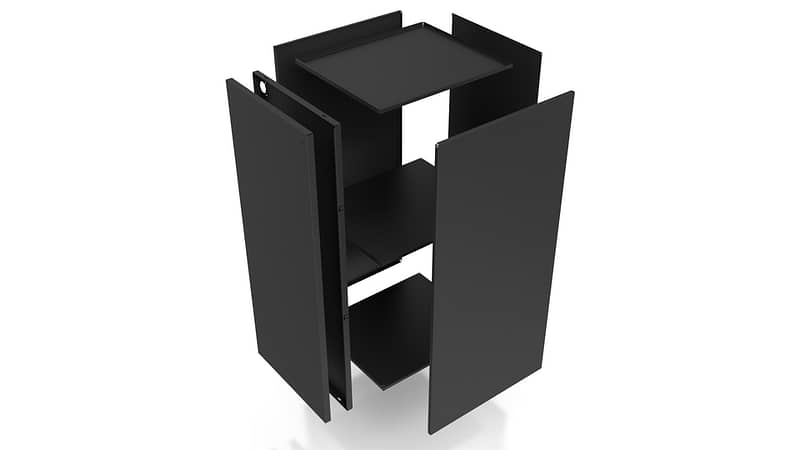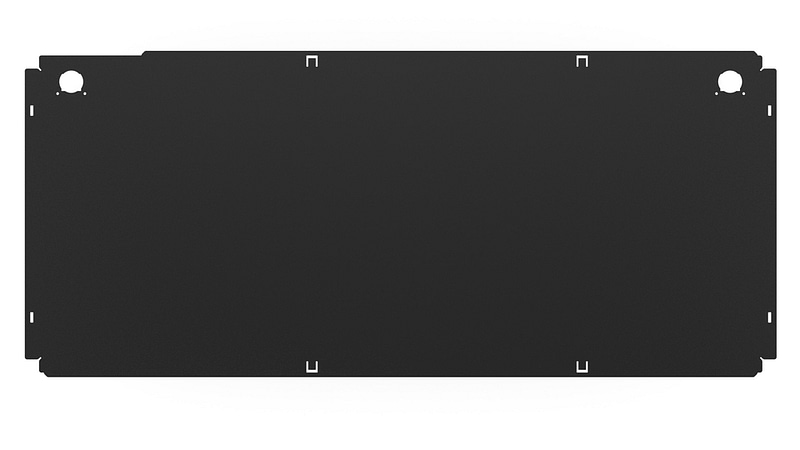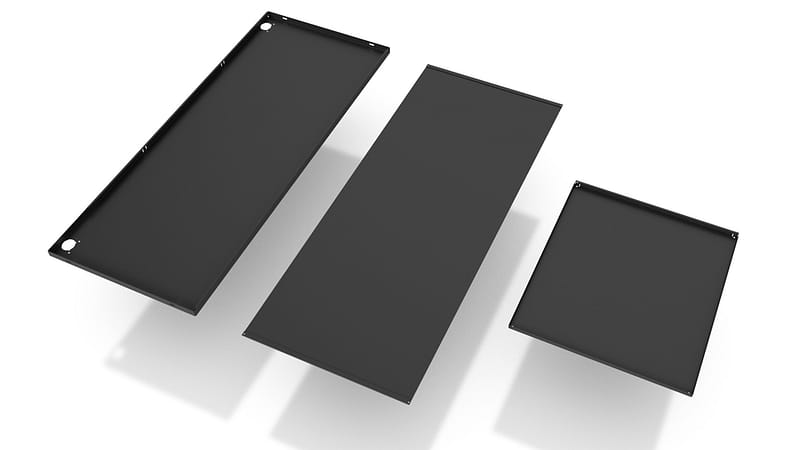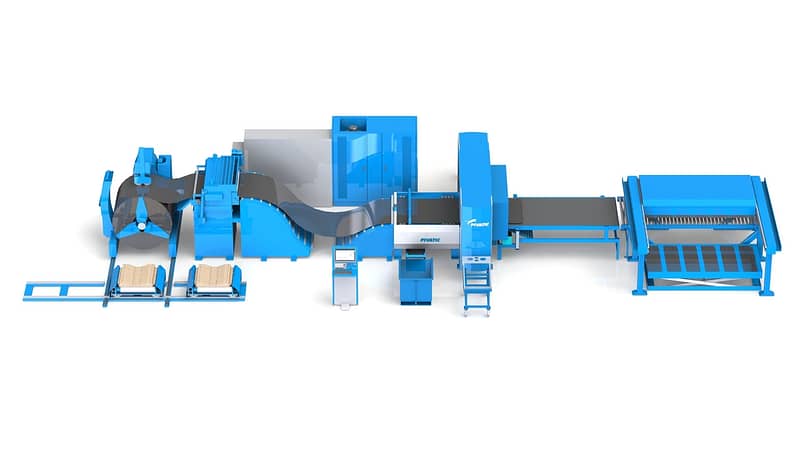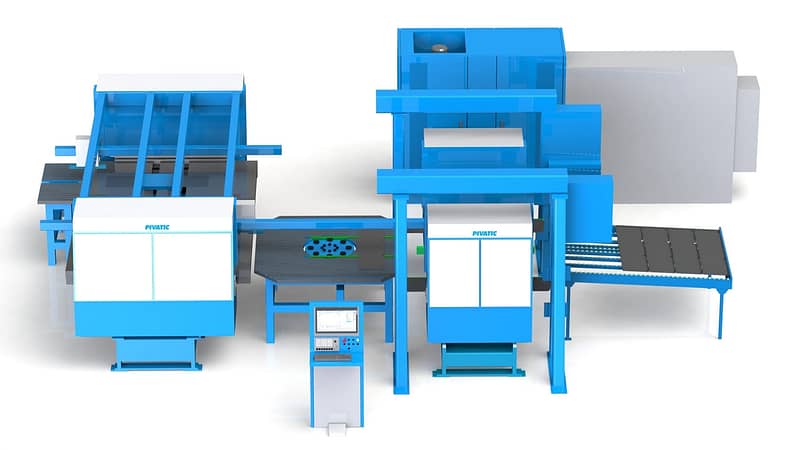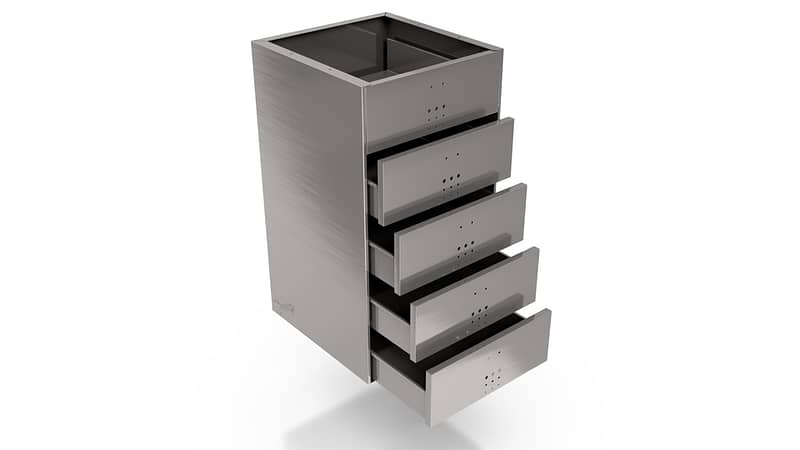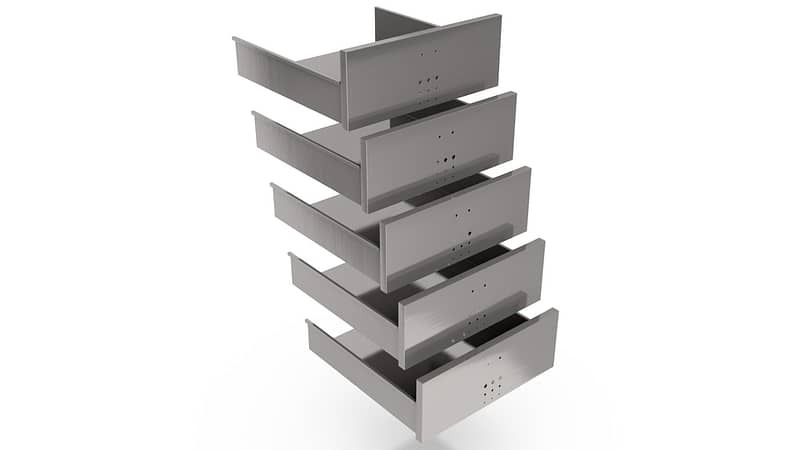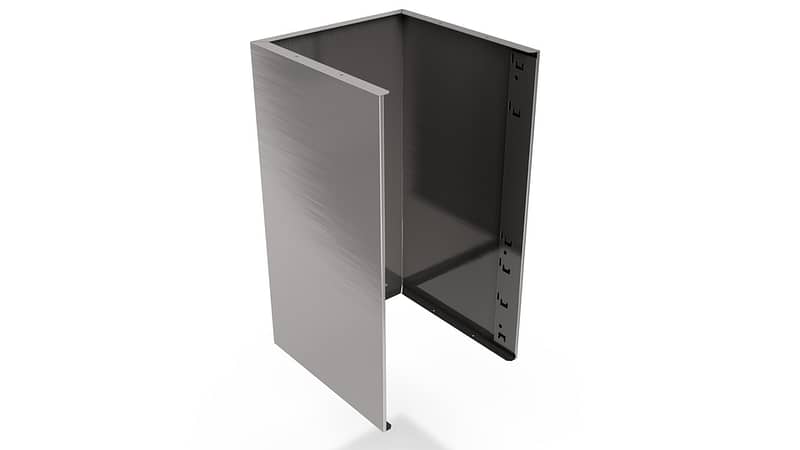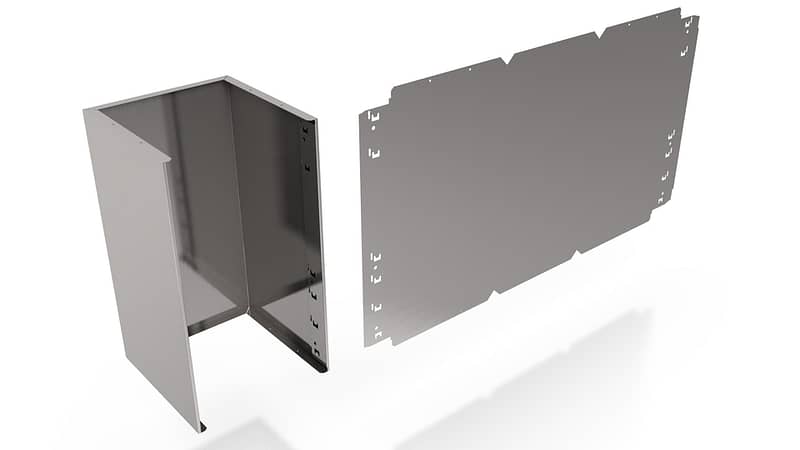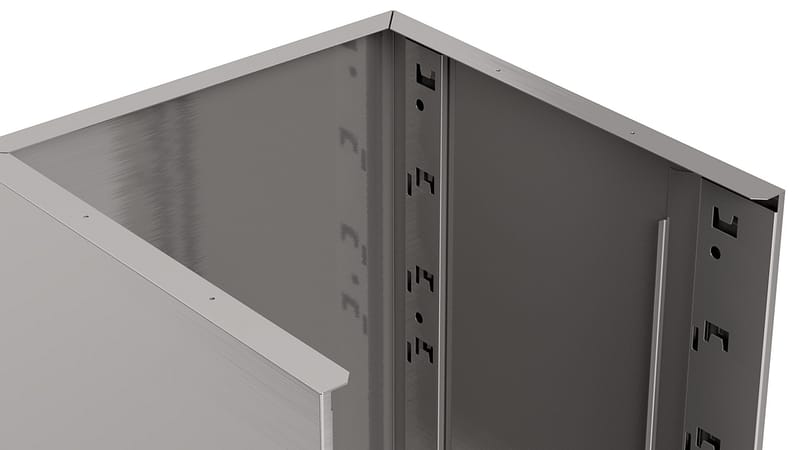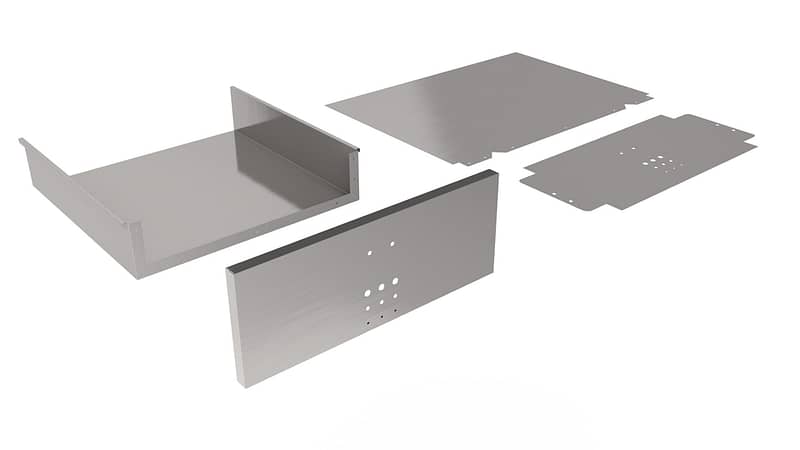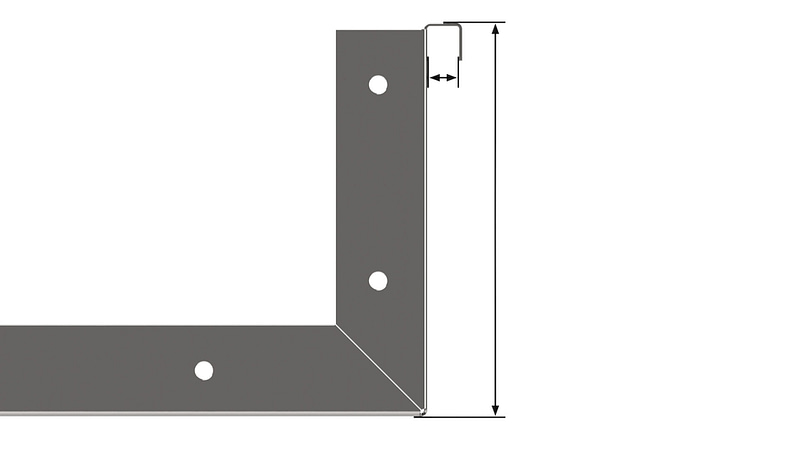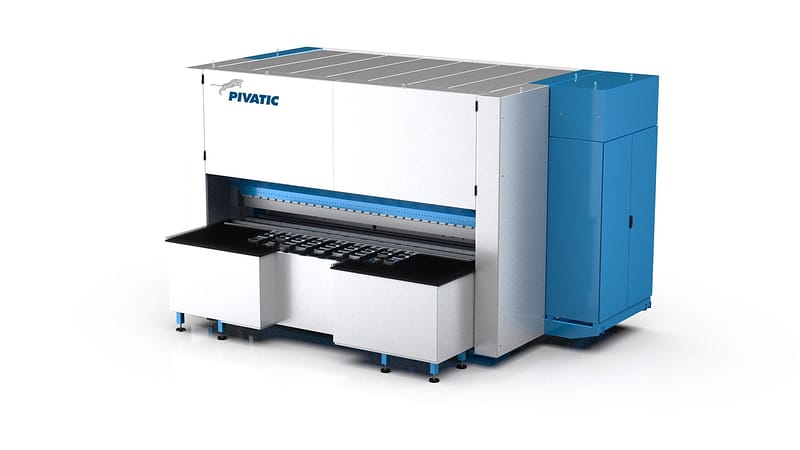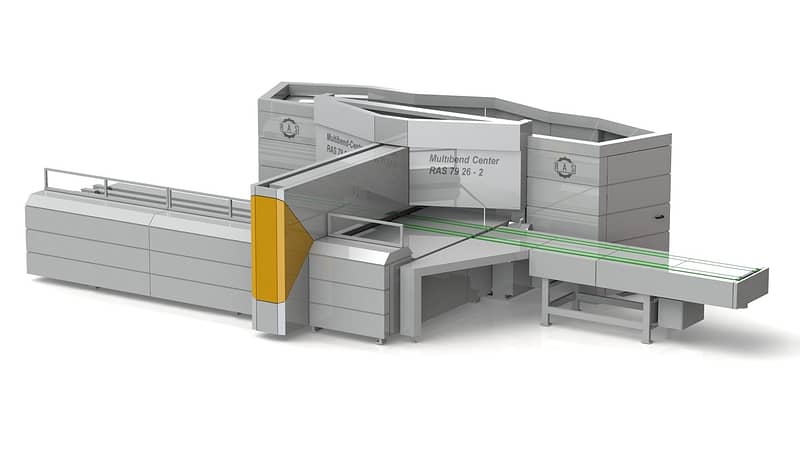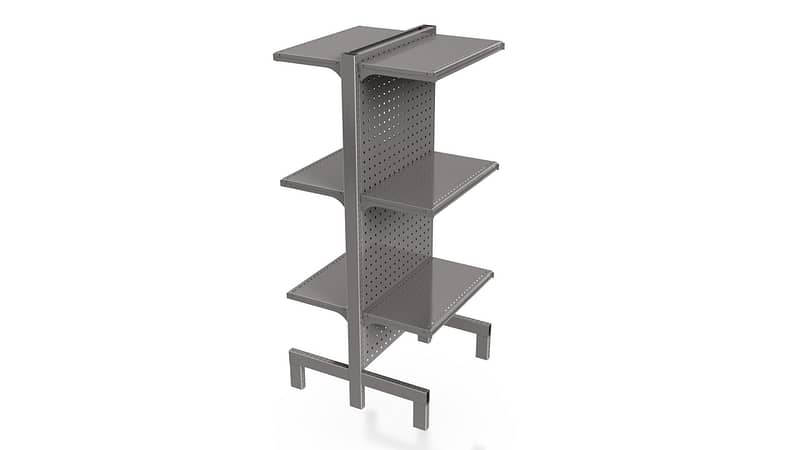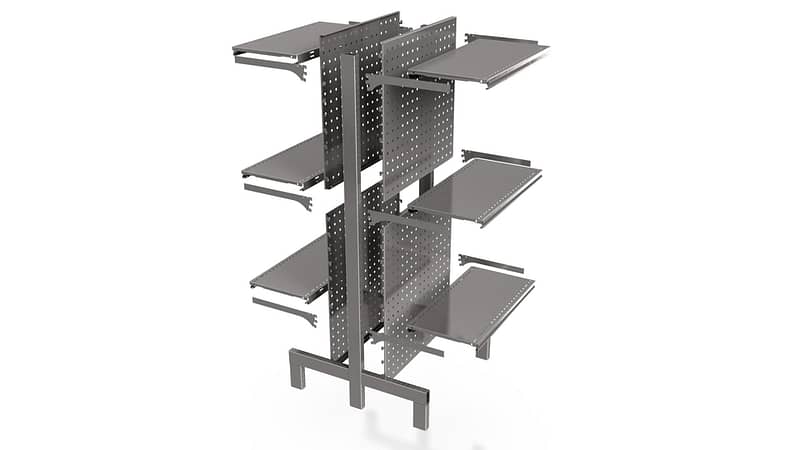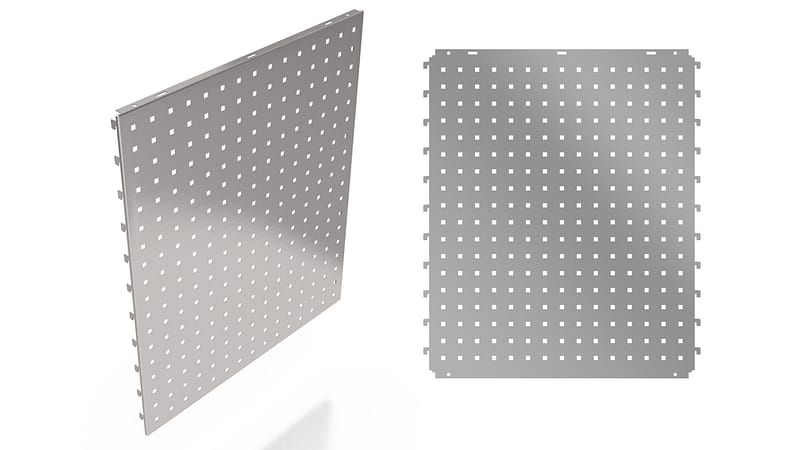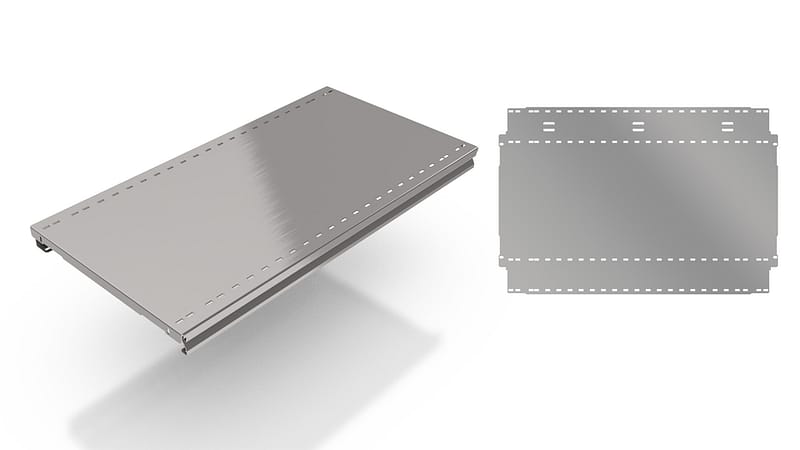Sheet metal furniture has traditionally been used a lot in offices, schools, supermarkets, kitchens, bathrooms and hospital or laboratory environments due to their durability and ease of sanitation. New growth in the sector has been the increasing global demand of safe deposit box and parcel locker manufacturing. For metal furniture the quality requirements are high and for aesthetic reasons most of them are finished with a paintjob or coating.
Example products for the steel furniture sector are kitchen cabinets, bathroom cabinets, water containers, drying cabinets, drawer cabinets, filing cabinets, lockers and tool boxes.
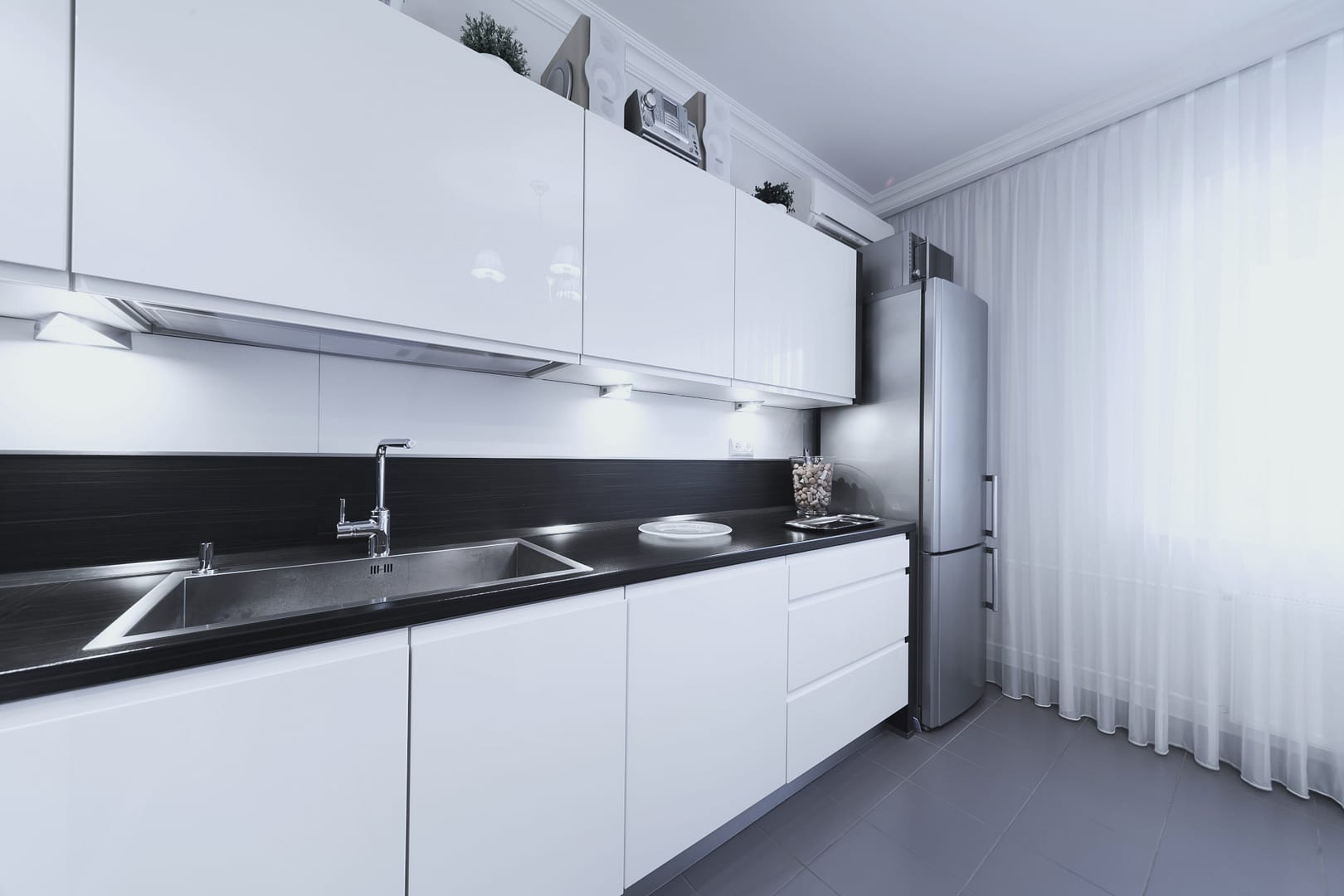 Kitchen
Kitchen
 Office
Office
 Storage
Storage
 Kitchen
Kitchen
Sheet metal kitchen furniture is mainly used in countries or areas where wooden furniture is not feasible due to high humidity. The products also compete in price with the wooden ones, and customers tend to choose the most cost-efficient 0.35 to 0.5 mm thin sheet metal for manufacturing that sets its own challenges in the process.
CHALLENGES AND REQUIREMENTS (KITCHEN CABINETS)
Kitchen cabinets are seasonal products and are being sold most a month or so before Christmas. Every manufacturer has their basic cabinet models as well as more expensive, decorative cabinets. Several kitchen cabinet manufacturers also produce lockers. The series sizes are large and a pre-emptively production of the finished modules (top and bottom cabinets) requires an efficient process. The material being used is thin mild steel and pre-painted mild steel. A large number of modern manufacturers set environmental limitations for new machine acquisition and tends to prefer eco-friendly electrical machines over traditional hydraulic machines.
The final bent pat is either a profile, panel or a box. The bending forms are simple, but the thin material needs to have bent stiffener forms to ensure a rigid end product. In fact, the kitchen cabinet were the first products to utilize bent stiffener forms in the sheet metal industry from the start of the 21st century. To form the stiffener with a wing bender or a panel bender, the bending tool needs to be designed for angles over 90 degrees.
SOLUTION (KITCHEN CABINETS)
Pivatic offers both punching and bending solutions for high volume production with excellent cycle times. For punching we suggest a coil punching line for 8 to 10-ton coils that last over a half of a production shift. Only a single coil change is required per day and the parts are punched and stacked automatically, ready for storing. To get a cycle time down to 5 seconds per part, the back-to-back part production from coil will have punched hole patterns and corner notches done with large F-size tools and the other holes with A to D size tooling. Short or small parts can be sheared straight to a box after the punching station, or like longer products, they can be stacked as kits with a suction cup or magnet stacking device. The multipart stacking for shorter parts ensures a great cycle time for the whole process.
 Office
Office
The office furniture industry is largely divided by sheet metal, wooden or plastic products. The manufacturers are generating products for ergonomic working such as office chairs, tables and storage solutions. Many of these end-products consist of multiple parts and they require a lot of assembly work, for which the manufacturing is mainly moving to the Far East. The assembly process takes up large area of floor space and the delivery times from Far East around the world are significant, so it is only feasible to produce the parts as small batches.
Example sheet metal products in the office furniture segment are drawer cabinets, filing cabinets, workstation cabinets, lockers, cupboards, desks, space dividers, and mobile shelving systems.
CHALLENGES AND REQUIREMENTS (DRAWER CABINET)
A drawer cabinet consists of the drawer body, several drawer boxes and their front plates. The drawer body (or frame) is manufactured from a single sheet metal blank, including the sides and the back, that is bent to U-shape. The drawer boxes are blanks bent into a panel or a profile, which will have a decorative front plate attached in the end. The drawer body and the boxes are both manufactured from raw mild steel. Drawer cabinet sizes are very standardized globally and the three different parts have their individual challenges, so the manufacturers often produce these parts with different machines or line solutions.
The drawer body manufacturing challenge is the process of forming a single metal sheet into U-shape. The height and depth characteristics of the drawer cabinet determines the length and width requirements for the raw material – and the support mechanism for the drawer box sliding rails requires a challenging stiffening bend or separate stiffener parts. In both cases the stiffening must be spot welded in the process before bending the blank into a U-shape.
The drawer boxes are manufactured as panels or as a cheaper alternative, profiles, which will have a separate back plate attached. As panel manufacturing, the need to do variable size corner notches is present due to different box sizes and complicated bending profiles. Both sides have several different bends and the hinge bracket bends prove very difficult with their narrowness. High drawer boxes require a certain daylight opening between the hold-down tools.
The front plates of the drawer boxes are often pre-painted or coated, so the process has to be scratch-free. A large variation of different starting materials limits manufacturing methods to be reasonable to blanks only. The front plates don’t have many holes or openings, but there is almost always a pull-out tab for the box that is a challenge to bend.
SOLUTION (DRAWER CABINET)
With an automatic Pivatic manufacturing process you can produce all of the end-product parts with the same line. CNC-controlled machines are the only solution to ensure consistent quality where every part is dimensionally accurate. In addition to raw mild steel, stainless steel, and aluminum, Pivatic line solutions can handle pre-painted and coated steel as all line modules are material friendly. Depending on the daily production volumes, Pivatic offers coil punching and blank punching solutions. For bending the parts, Pivatic wing bending lines are optimal for large series. For small to medium series, it is preferred to have an integrated Panel Bender after the punching line.
Pivatic’s servo-electric punching machines fit best for cabinet body and cabinet box production as series or as kits since they are both of the same material. A flexible Thick Turret punching station with double punching technology enables best possible cycle times. A kit production is possible with punching a nested coil strip that is cut to single parts with horizontal and vertical shears. The punched parts can be buffered or delivered straight to Pivatic bending process or an integrated Panel Bender.
The drawer cabinet body can be punched from pre-cut blanks or from standard-size coils that has 2-3 cabinet bodies nested side-by-side. Cabinet sizes of 400-600 mm (15-23”) in height are an excellent fit for 800, 1250 or 1525 mm (31, 49 or 60”) coil sizes. From the continuous strip, an exact-length blank is always cut to match the end-product width – without any material waste. The challenging stiffening bend can be done with using Pivatic MPB Benders in place of the traditional folding benders, or by using an integrated Panel Bender. A spot-welding station can be included after the panel bending process, from which the part is transferred to Pivatic box bending station to finish up the drawer cabinet body.
 Storage
Storage
Different types of storing and shelving systems are manufactured for several industrial and residential use. The shelves in supermarkets, apothecaries and cosmetic stores, the closets in schools or sports centers, toolboxes, safe deposit boxes, and the rising demand for parcel lockers are good examples. All of the end products are modularly compiled from rectangular parts, which is a perfect fit for Pivatic technology.
CHALLENGES AND REQUIREMENTS (METAL SHELVING SYSTEMS)
To organize and store different types of items, a number of powder-coated metal shelving systems are produced for destinations such as stores, garages, and factories. They consist of shelves, shelf brackets, back panel or slat-wall panel, foot pillars, and cover plates. These high-volume parts are typically run to storage as medium or big batches, but the largest orders to shopping centres or new stores are produced as assembly kits in the correct order. A single large order can be equivalent to about a week of production.
Process and Material
The series production of hundreds or thousands of parts requires a highly efficient process with several steps. The parts require flexible punching, perforating, turning the parts, bending several sides, spot welding, and robot packaging. The material used is 0.5 – 1.0 mm thin mild steel, as due to the spot welding of shelf reinforcements, powder coating must be done after the manufacturing process. The part variables in the shelves and back panels are determined modularly according to the shelf spacing.
Punching
When punching the back panels, it is required to have attachment holes for pillar or wall installation, as well as a programmable perforation tool: the hole pattern is done for the entire width of the back panel. So as the shelf spacing varies, the perforation tool must also be adjustable accordingly. To punch the shelves, it is needed to have tooling for shelf bracket installation holes, corner notches, and for a specific form bend of the front for the price listing or labelling.
Bending
A common challenge in bending both back panels and shelves is the requirement for programmable width and length variables. Both end parts are panels. The back panel bends are upwards only, but the shelves have a challenging round bending form on the long edge. For a finished process after punching and bending, it would be feasible to have a spot-welding robot as well as a packaging robot in the end.
SOLUTION (METAL SHELVING SYSTEMS)
Pivatic manufacturing systems are best fit for metal shelving systems’ back panels and shelves, as their product dimensions are optimal for thick turret punching and wing bending or profiling. With a single production line, it is possible to manufacture all of the different sized parts in a product family as either series, kits, or singles.
For punching, we recommend a coil manufacturing line, where the coil width is always chosen due to standardized part width, be it the depth of a shelf or the height of the back panel. The part is programmatically sheared to length, producing no excess waste in the process. With a flexible TT punching station, you can punch all the required holes, and a few tool slots can also be equipped with forming tools for the shelf’s price list form bend. The back panel perforation is done with a HT press tool station included after the TT punching station, and it’s equipped with several piercing tool activators that automatically adjust according to the part width. After punching, the parts are always flipped over to have the punching burr inside of the part after the bends are done.
For bending, we offer a panel bending line, where the long sides can be either roll formed or bent. The end bends are done by a bending station of the type FSW, where the upper hold-down tool is divided into sections and adjusted automatically via a tool changer. A spot-welding station and a packaging robot are included to form a single machine process.
To get tailored solution to fill your manufacturing needs, please contact our technical sales team.
